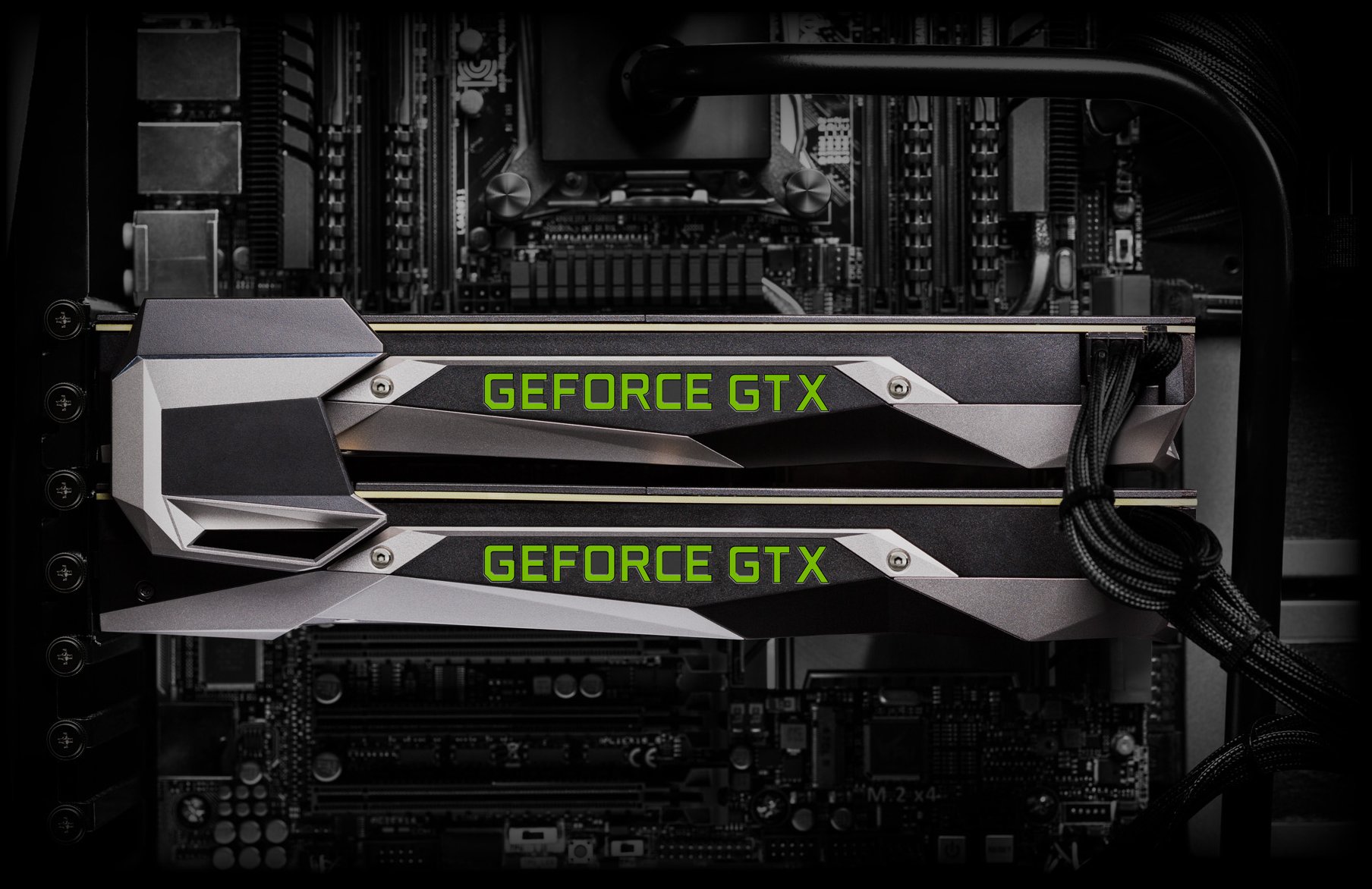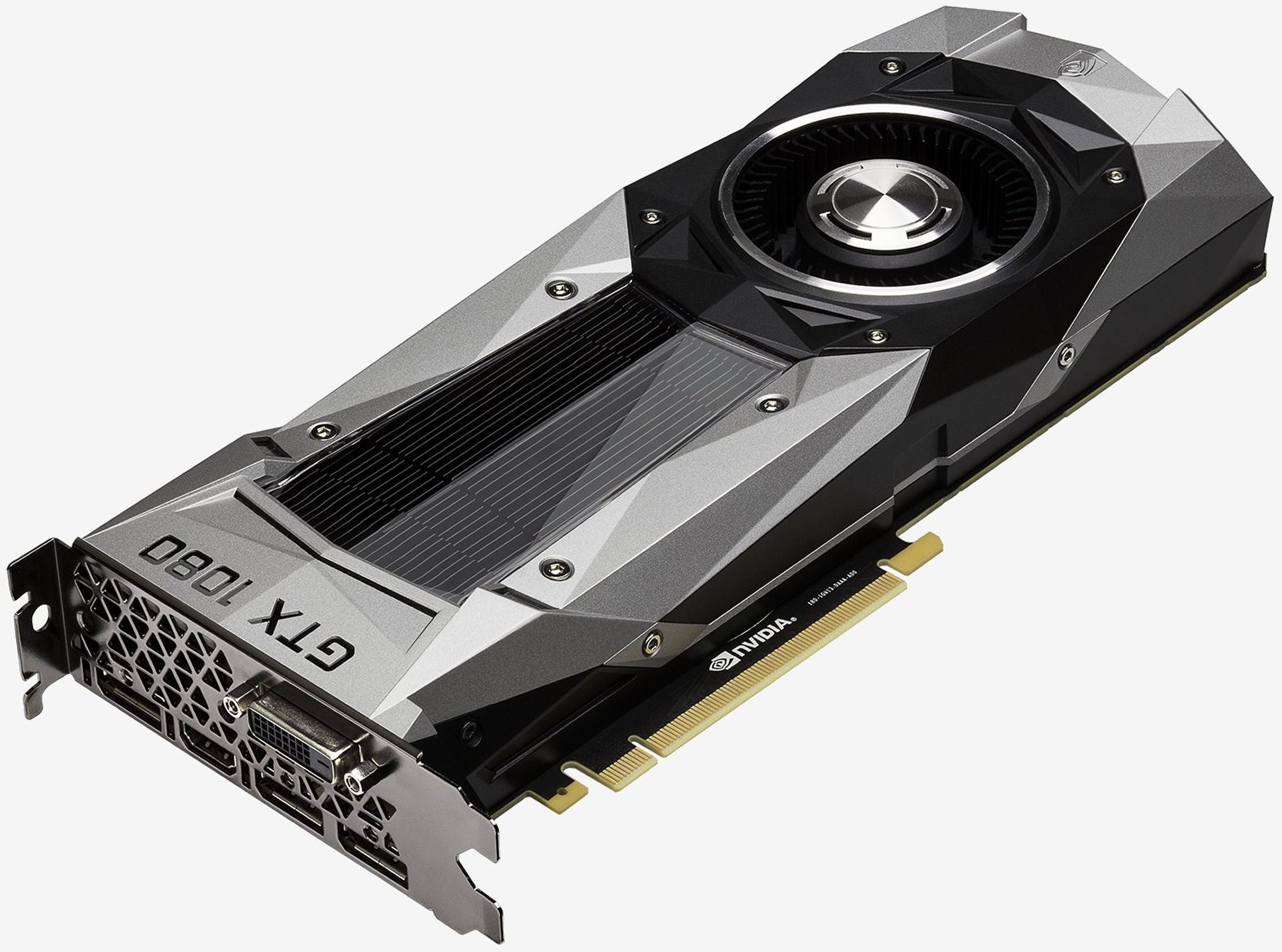Nvidia GeForce GTX 1080 Review
Things used to move farther and faster dorsum in the early days of GPUs. Looking back to the year 2000 we had the GeForce 2 Ultra, an epic production of its fourth dimension built using the 180nm manufacturing process. The following yr the GeForce 3 serial moved down to 150nm. It would be just ii more than years before the move to 130nm was made and the 110nm process a twelvemonth after.
In fact, things continued to motion pretty quickly until just four years agone, when we made the transition from the 40nm design process used by Nvidia'southward Fermi architecture to the 28nm process, even so used today. This extended development cycle has had AMD and Nvidia squeezing the accented most out of the 28nm design process.
As good as the Titan 10 and Fury X are, it is fourth dimension to move on in the quest for greater efficiency and even greater performance. Showtime to market with a truthful side by side generation GPU is Nvidia. Codenamed Pascal, this latest architecture promises big things and could very well be the biggest step nosotros've seen in contempo years.

Leading the charge is the new GeForce GTX 1080. Built using the 16nm pattern process and packed with faster GDDR5X memory, it promises to put away the Titan X while consuming less power than the 980 Ti. Nvidia claims the GTX 1080 is three times more ability efficient than Maxwell.
Following a few weeks later will be the more affordable GeForce GTX 1070. Though merely certain details are known about that card (update: total specs hither), for now nosotros've learned its cutting down core will withal exist good for 6.5 TFLOPS, it'll come up armed with an 8GB VRAM buffer running on more typical GDDR5 memory. And then in spite of the downgrades, the GTX 1070 is poised to become the hotter commodity considering its more attainable $380 price tag.
Actually, pricing is something to consider with these new Pascal graphics cards. For the commencement time consumers will be asked to pay a price premium for Nvidia's reference bill of fare, now referred to as the "Founders Edition." Previously reference cards could be had for the base MSRP, while custom partner boards oftentimes came at a price premium.
Built using the 16nm design process and packed with faster GDDR5X retentiveness, the new GeForce GTX 1080 promises to put away the Titan Ten while consuming less power than the 980 Ti.
This time effectually the GeForce GTX 1070 "Founders Edition" will be available for no less than $450, going on auction June 10th. Custom boards from partners are expected to outset at $380 and will become available at a later on date.
The same is truthful for the flagship GeForce GTX 1080, with initial sales limited to the Founders Edition at $700 from May 27th onwards. Somewhen the GTX 1080 will become available from board partners for as lilliputian as $600.
Nvidia feels their reference design is the best version possible of the GTX 1080 and GTX 1070 and they intend to have their design on the marketplace for the life of the card, which is why you'll be able to buy Founders Edition cards from Nvidia straight.
GeForce GTX 1080 in Detail
The GeForce GTX 1080, codenamed GP104-400, features a surprisingly small GPU - the die size is but 314mm2, roughly one-half that of the Titan X and 980 Ti. There are still 7.2 billion transistors crammed inside, just 10% fewer than the most circuitous Maxwell GPUs.
Nvidia has been able to squeeze so much into this small space thank you to the utilize of the 16nm FinFET process. This means Nvidia is now able to produce more than circuitous GPUs with greater core counts, though that isn't exactly what they have done hither with the GTX 1080.

As with CPUs, one of the key defining aspects of GPU performance is core count. The GeForce GTX 680 had 1536 cores, or CUDA cores, as Nvidia calls them. The original Titan featured 2688 CUDA cores, while the Titan Ten received a whopping 3072 CUDA cores.
Nvidia tells us that the GTX 1080 is a good flake faster than the Titan X, then yous might expect a similar or larger cadre count. To everyone's surprise at the eye of the GTX 1080 are simply 2560 CUDA cores, 17% less than the Titan X and 9% less than the 980 Ti. Thus Pascal is not just more than efficient, simply thank you to the newer process, it'south received a massive boost in frequency speed at which those cores can operate.

Compared to the Titan X and 980 Ti, the GTX 1080 runs its cores up to 61% faster, with a base of operations clock speed of 1607MHz and boost as high as 1733MHz.
Further, the GTX 1080 only requires a unmarried viii-pin PCI Limited power connector with a TDP rating of just 180 watts, so on paper its power consumption is only 9% higher than the super-efficient GTX 980.

There was just ane more ingredient that these high frequency cores required in order to get the chore washed: very fast memory. The solution here isn't the hotly anticipated HBM2, simply new GDDR5X memory. GDDR5X is designed to run at speeds of x - 14Gbps, which is twice that of GDDR5. In order to achieve this, the fleck interface has been widened from 8 nibbles (32 bit) to xvi nibbles (64 bit).
The GTX 1080 Founders Edition we received to test came equipped with Micron'south GDDR5X memory running at 10 Gbps, which is substantially 5GHz! That is a 43% increment over the GTX Titan 10 and GTX 980 Ti, both of which use GDDR5 memory running at 7 Gbps (1.7GHz).
Although retentivity is considerably faster, the 384-scrap memory coach of the Titan 10 and 980 Ti has been downgraded to the same 256-scrap motorbus used by the GTX 980 and thus limited to a 320GB/s retentiveness bandwidth.
With performance expected to exceed even that of the Titan X, we can assume that the 1080 is going to be a bit starved for retentiveness bandwidth, which ways overclocking could be very beneficial assuming GDDR5X retention tin can exist pushed higher (y'all can bet we'll endeavour). So let's motility on into testing.
Source: https://www.techspot.com/review/1174-nvidia-geforce-gtx-1080/
Posted by: abramsonmessled.blogspot.com


0 Response to "Nvidia GeForce GTX 1080 Review"
Post a Comment